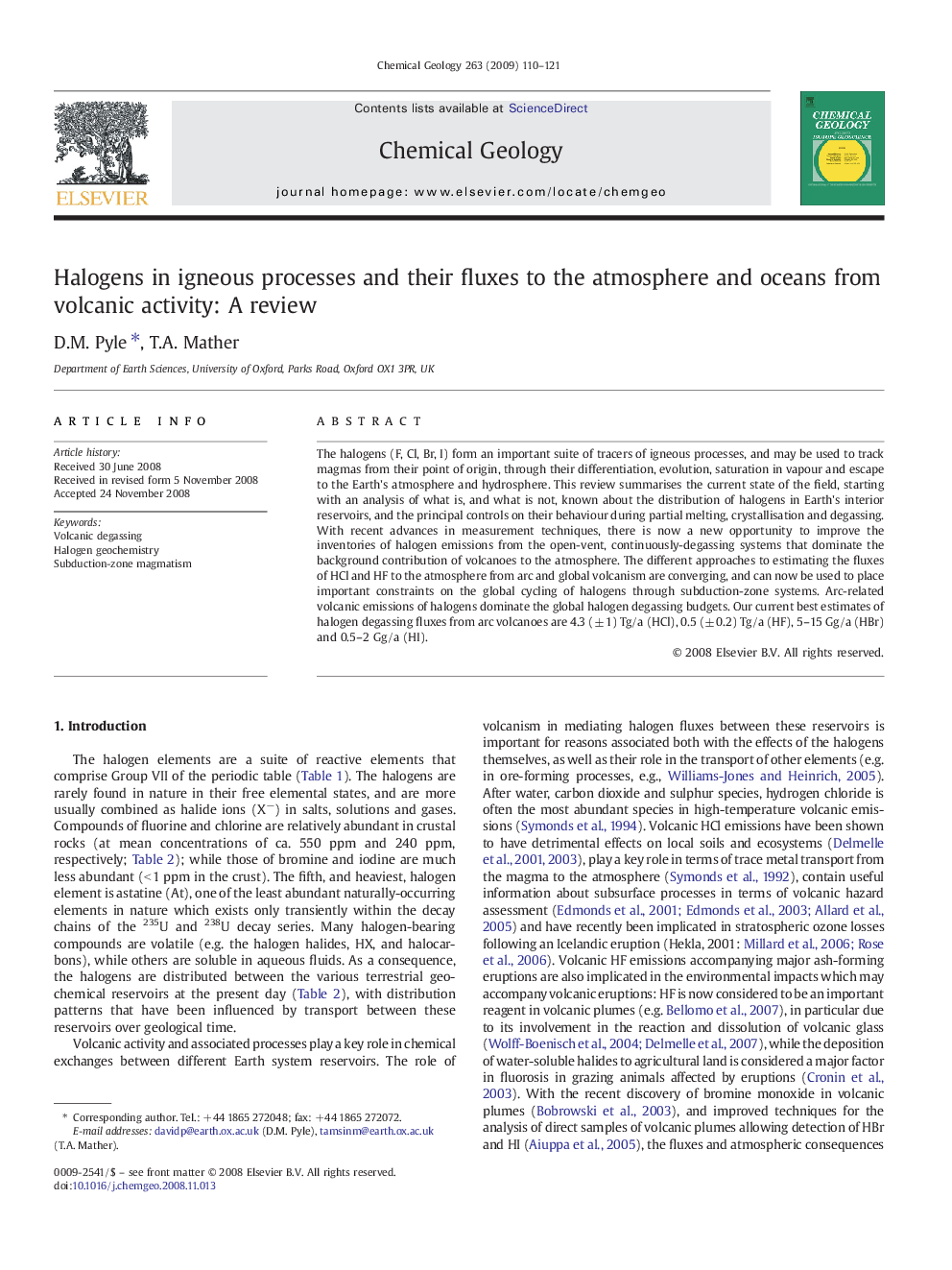| Article ID | Journal | Published Year | Pages | File Type |
|---|---|---|---|---|
| 4700250 | Chemical Geology | 2009 | 12 Pages |
The halogens (F, Cl, Br, I) form an important suite of tracers of igneous processes, and may be used to track magmas from their point of origin, through their differentiation, evolution, saturation in vapour and escape to the Earth's atmosphere and hydrosphere. This review summarises the current state of the field, starting with an analysis of what is, and what is not, known about the distribution of halogens in Earth's interior reservoirs, and the principal controls on their behaviour during partial melting, crystallisation and degassing. With recent advances in measurement techniques, there is now a new opportunity to improve the inventories of halogen emissions from the open-vent, continuously-degassing systems that dominate the background contribution of volcanoes to the atmosphere. The different approaches to estimating the fluxes of HCl and HF to the atmosphere from arc and global volcanism are converging, and can now be used to place important constraints on the global cycling of halogens through subduction-zone systems. Arc-related volcanic emissions of halogens dominate the global halogen degassing budgets. Our current best estimates of halogen degassing fluxes from arc volcanoes are 4.3 (± 1) Tg/a (HCl), 0.5 (± 0.2) Tg/a (HF), 5–15 Gg/a (HBr) and 0.5–2 Gg/a (HI).
